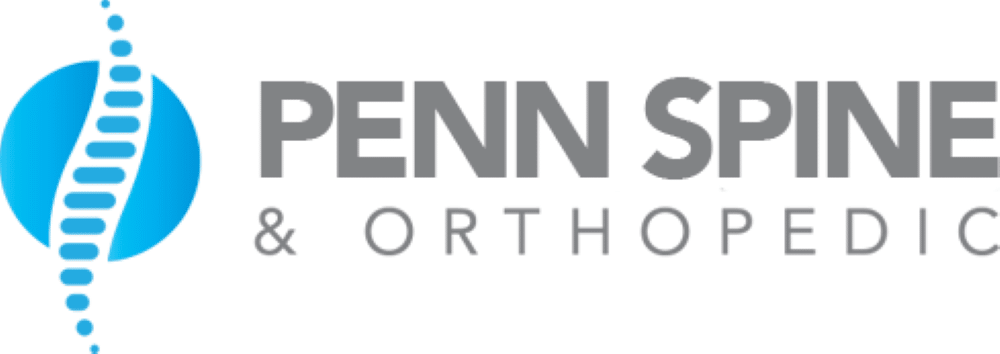Sciatic nerve pain, an affliction that remains largely misunderstood, can be a debilitating condition for those suffering from it. Originating in the lower back and radiating down the leg, this condition is not exclusive to the elderly population as frequently perceived. Causes can range from disc herniation and trauma to lifestyle factors. To manage this condition effectively, it is imperative to understand its etiology, symptoms, and various treatment options. We must also consider the potential benefits of a holistic approach, including exercise, diet alterations, and stress management. How can these strategies contribute to pain relief and improved life quality? Let’s explore.
Understanding Sciatic Nerve Pain
Though it’s commonly known, understanding sciatic nerve pain requires a thorough analysis of the anatomy of the lower back and pelvis where the nerve originates, and a broad knowledge about the common conditions that can cause its irritation or inflammation. It is a condition often misunderstood, leading to a number of Sciatica misconceptions. For instance, it is often mistaken for general back pain, when in reality, it’s a distinct discomfort that travels from the lower back, through the buttock, and down the large sciatic nerve located in the back of each leg.
Furthermore, the onset of sciatica is frequently attributed solely to aging and wear and tear. While these are contributing factors, they are not the exclusive causes. Conditions such as lumbar disc herniation, degenerative disc disease, lumbar spinal stenosis, and spondylolisthesis can also cause sciatica.
In terms of treatment, a shift towards holistic remedies is observed in the medical community. These include physical therapy, acupuncture, chiropractic manipulations, and yoga. These non-invasive remedies focus on relieving pressure on the sciatic nerve through various techniques, thereby reducing the intensity and frequency of pain. Understanding such nuances can help in managing and treating sciatic nerve pain more effectively.
Anatomy of the Sciatic Nerve
Delving into the intricacies of the sciatic nerve, we find that it is the longest and thickest nerve in the human body, originating in the lower lumbar spine and extending down to the foot. This nerve is vital for transmitting signals from the brain to the legs and vice versa, making its health paramount for mobility and sensation.
Four key facts about the anatomy of the sciatic nerve include:
- The sciatic nerve is made up of five nerve roots that emerge from the lower spine.
- It passes through the hip joint and continues down the back of the leg.
- The nerve branches in the knee region, leading to the lower leg and foot.
- It innervates the skin of the foot and the majority of the lower leg.
Nerve inflammation reduction and sciatic nerve stretching are two strategies often employed to alleviate the pain associated with sciatica. These methods aim to minimize pressure on the nerve and maintain its flexibility, respectively. This understanding of the anatomy of the sciatic nerve helps in formulating effective treatment plans, thereby improving the quality of life for patients suffering from sciatica.
Common Causes of Sciatica
Turning our attention to the common causes of sciatica, it is important to understand that this prevalent condition often stems from a variety of underlying issues, most importantly spinal disc herniation, spinal stenosis, or direct nerve compression due to trauma. Spinal disc herniation, for instance, happens when a tear in the outer, fibrous ring of an intervertebral disc allows the soft, central portion to bulge out. This can exert pressure on the sciatic nerve, triggering sciatica.
Spinal stenosis, on the other hand, is a narrowing of the spinal canal, leading to nerve compression. Trauma resulting from accidents or falls can also directly compress the nerve, causing sciatica. Other Sciatica Risk Factors include obesity, sedentary lifestyle, and age. Obesity increases stress on the spine while an inactive lifestyle can lead to nerve damage. Aging can also lead to changes in the spine, such as bone spurs and herniated discs.
Diet Influence on Sciatica is also notable. A diet that causes inflammation, like one high in sugars and unhealthy fats, can exacerbate sciatica. Consuming a balanced diet rich in anti-inflammatory foods can help manage the condition. Therefore, understanding these causes and risk factors is important in preventing and managing sciatica.
Symptoms to Watch Out For
In the domain of sciatica, there are certain hallmark symptoms that patients should vigilantly watch out for, as these may indicate the onset or exacerbation of this painful condition. Understanding and identifying these symptoms can provide valuable insight into the severity of the condition, and inform a strategic approach towards treatment.
- Pain in the lower back or hip that radiates to the buttock and down a leg: This is the most common and distinctive symptom of sciatica. The pain can range from mild discomfort to severe, debilitating pain, often intensified by sitting.
- Numbness, tingling, or muscle weakness in the affected leg or foot: These symptoms are indicative of nerve damage and should be taken seriously.
- Increased pain during pregnancy: Sciatica in Pregnancy can be exacerbated due to the additional weight and pressure on the spine. This can lead to increased pain and discomfort.
- Emotional Impact of Sciatica: Chronic pain can lead to anxiety and depression. This emotional burden can exacerbate physical symptoms, creating a vicious cycle of pain and emotional distress.
Recognizing these symptoms is vital for timely intervention and effective management of sciatica.

How Sciatica Is Diagnosed
To accurately diagnose sciatica and discern its root cause, a thorough medical evaluation is typically conducted, which may encompass a detailed patient history, physical examination, and, in some cases, advanced diagnostic imaging techniques. The process begins with a patient history evaluation. During this phase, the physician will gather information about the patient’s symptoms, past medical conditions, and lifestyle habits. This information can help the physician identify potential risk factors and understand the severity and progression of the patient’s condition.
Following the patient history evaluation, a physical examination is performed. The physician will assess the patient’s mobility, reflexes, and sensory responses. Specific physical tests, such as the straight leg raise test, can also be used to provoke sciatic symptoms and confirm the diagnosis.
If the cause of the sciatica remains unclear after the history and physical examination, diagnostic imaging techniques may be employed. These can include X-rays, MRI scans, and CT scans. These imaging techniques provide detailed views of the spinal structures, allowing the physician to pinpoint the exact location of the nerve compression or irritation causing the sciatica. However, these are usually reserved for severe or persistent cases where invasive treatment may be considered.
Non-Surgical Treatment Options
Turning our attention to non-surgical interventions for sciatic nerve pain, two primary modalities emerge: physical therapy approaches and medicinal pain management. Physical therapy techniques can often provide significant relief by focusing on strengthening and stretching exercises that target the lower back, hips and legs. Concurrently, medicinal approaches aim to alleviate pain symptoms and can range from over-the-counter anti-inflammatory drugs to prescription medications for more severe cases.
Physical Therapy Approaches
Physical therapy, a non-surgical treatment option, offers thorough management for sciatic nerve pain by aiming to improve mobility, strengthen the lower back and leg muscles, and promote proper body mechanics. This is achieved through a variety of techniques, including:
- Manual Manipulation: This involves hands-on techniques to free up mobility of the spine and improve alignment, which can reduce sciatic nerve irritation.
- Cold Therapy: Application of cold packs helps to reduce inflammation and numb sore tissues, alleviating pain.
- Strengthening Exercises: Focused exercises to strengthen the muscles supporting the spine can alleviate pressure on the sciatic nerve.
- Stretching Exercises: Regular stretching can help to relieve sciatic pain by loosening muscle tension and improving flexibility.
These approaches are tailored to the patient’s specific needs, offering a holistic strategy for managing sciatic nerve pain.
Medicinal Pain Management
In addition, in-depth, it’s important to mention that complementing physical therapy, medicinal pain management offers a range of non-surgical options that can greatly alleviate the discomfort associated with sciatic nerve pain. The use of over-the-counter pain relievers, such as non-steroidal anti-inflammatory drugs (NSAIDs), can help reduce inflammation and relieve mild to moderate pain. For more severe pain, prescription medications like muscle relaxants may be utilized. Alternative therapies, including acupuncture or chiropractic care, are also effective non-surgical approaches. Moreover, herbal supplements such as turmeric and capsaicin, known for their anti-inflammatory properties, can be beneficial when incorporated into a thorough pain management plan. It’s essential to note that while these options can provide relief, they should be pursued under the guidance of a healthcare professional.
Exploring Surgical Interventions
In the domain of medical interventions for sciatic nerve pain, surgical procedures offer a thorough approach that targets the root cause of the discomfort. These operations, however, are not without their hurdles. Surgical risks and post-surgery rehabilitation are key factors that patients and healthcare professionals must consider.
Four primary aspects of surgical interventions for sciatic nerve pain include:
- Microdiscectomy: This minimally invasive procedure involves removing portions of the herniated disc that are pressing on the sciatic nerve, providing significant relief.
- Laminectomy: In more severe cases, this technique involves the removal of the entire lamina, alleviating pressure on the nerve.
- Surgical Risks: Complications can include infection, nerve damage, and the possibility of no relief from symptoms. It is important for patients to understand these risks before opting for surgery.
- Post-surgery Rehabilitation: After surgery, a well-structured rehabilitation program is essential. This can involve physical therapy, pain management, and lifestyle modifications to expedite recovery and prevent recurrence.

Exercise and Sciatic Pain
Understanding the interplay between exercise and sciatic pain is crucial in managing this neurological condition. We will now analyze the types of exercises that can be effective in alleviating sciatica symptoms and the necessary precautions to take during physical activity. This examination will provide a thorough view of the role physical activity plays in the therapeutic approach to sciatic nerve pain.
Effective Exercises for Sciatica
To alleviate the discomfort associated with sciatica, a series of targeted exercises may serve as an effective strategy. This approach can be particularly potent when combined with other treatments such as acupuncture, whose efficacy is well-documented.
- Yoga: The benefits of yoga for sciatica lie in its ability to stretch and strengthen muscles, improving flexibility and reducing pain.
- Pilates: This exercise form focuses on core strength, which can help in managing sciatica.
- Stretching: Regular stretching can help relieve sciatic pain by reducing muscle tension and increasing range of motion.
- Low-impact Aerobic Exercise: Walking, swimming, or biking can increase blood flow, reducing inflammation and accelerating healing.
Incorporating these exercises into your routine can markedly improve sciatic pain management.
Exercise Precautions With Sciatica
While exercise can be highly beneficial for managing sciatica, it is important to take certain precautions to avoid exacerbating the condition. Yoga, for instance, is often recommended for sciatica patients due to its ability to gently stretch and strengthen the back muscles. However, certain yoga poses may put undue strain on the sciatic nerve, causing more harm than good. It is thus essential to engage in sciatica and yoga under the supervision of a trained professional. Simultaneously, incorporating hot and cold therapy can help manage sciatic pain, but improper usage may lead to injury. Heat helps to relax tight muscles, while cold reduces inflammation, but both should be applied judiciously. Overuse or incorrect application can potentially worsen the symptoms.
Lifestyle Changes for Relief
Implementing certain lifestyle modifications can significantly alleviate the discomfort associated with sciatic nerve pain. Two key areas of focus should be dietary adjustments and stress management, as they tend to have a significant influence on the body’s overall health and its response to pain.
- Dietary Adjustments: Consuming a balanced diet rich in anti-inflammatory foods can help reduce inflammation that exacerbates sciatic nerve pain. Foods rich in omega-3 fatty acids, antioxidants, and other essential nutrients are beneficial. It’s also important to stay hydrated and avoid excessive consumption of caffeine and alcohol, which can contribute to dehydration and inflammation.
- Stress Management: Chronic stress can worsen sciatic nerve pain by triggering muscle tension and inflammation. Incorporating stress-reducing activities such as meditation, yoga, and deep breathing exercises can help manage stress levels and reduce pain.
- Regular Physical Activity: Engaging in regular, low-impact exercises such as swimming, walking, or cycling can help increase blood flow, reduce inflammation, and alleviate sciatic nerve pain.
- Proper Posture: Maintaining good posture, especially during activities that require heavy lifting or long periods of sitting, can help prevent unnecessary strain on the lower back and sciatic nerve.
Preventing Future Sciatica Flare-Ups
Prevention is the cornerstone of managing sciatic nerve pain, as adopting certain strategies and routines can effectively mitigate the risk of future flare-ups. Key to these strategies are sciatica diet changes and understanding the significant impact of sleep positions.
Sciatica diet changes are instrumental in maintaining a healthy weight, thereby reducing pressure on the sciatic nerve. This involves incorporating anti-inflammatory foods like fruits, vegetables, lean proteins, and whole grains into your diet, while moderating the intake of processed foods and sugars. Hydration is also paramount, as it aids in maintaining soft tissue elasticity and fluidity in joints.
The impact of sleep positions on sciatica cannot be overstated. Certain positions can exacerbate the pain, while others can alleviate it. Ideally, sleeping on your back with a pillow under your knees can help maintain the natural curve of your spine and reduce pressure on the sciatic nerve. Alternatively, sleeping on your side with a pillow between your knees can also achieve a similar effect.
When to Seek Medical Attention
Despite the effectiveness of preventive measures such as dietary changes and ideal sleep positions, it becomes essential to acknowledge the circumstances under which medical intervention for sciatic nerve pain is warranted.
- Persistent Pain: If the symptoms of sciatica persist beyond a few weeks, despite self-care measures or use of alternative healing methods, it is vital to consult a healthcare provider. This prolonged pain can signify a more serious underlying condition.
- Deteriorating Symptoms: Should the pain intensify, or if there is an increase in numbness or weakness in the lower extremities, medical attention is necessary. These symptoms may indicate nerve damage that requires immediate treatment.
- Loss of Bowel or Bladder Control: This is a rare but serious symptom associated with sciatica. It could suggest a condition called cauda equina syndrome, which is a medical emergency.
- Psychological Impact: Chronic pain can have a significant psychological impact, leading to depression or anxiety. If you notice changes in your mood or mental health, it is essential to seek help.
Frequently Asked Questions
Can Sciatic Nerve Pain Affect Pregnancy or Childbirth?
Yes, pregnancy may exacerbate sciatic nerve discomfort. However, with appropriate pregnancy exercises, the pain can be managed. An epidural during childbirth may temporarily relieve the pain, but won’t permanently affect the condition.
Does Sciatic Nerve Pain Increase Susceptibility to Other Health Conditions?
While not directly causing other health conditions, the chronic nature of sciatic nerve pain can impact mental health, potentially leading to conditions like depression or anxiety. Regular exercise can help manage pain and improve overall wellbeing.
Is There a Link Between Weight and Sciatica?
Yes, there is a significant correlation between weight and sciatica. Obesity induced sciatica is a common issue, as excess weight can exacerbate spinal pressure. Hence, weight management strategies are essential in mitigating sciatica symptoms.
Can Children or Adolescents Experience Sciatic Nerve Pain?
Yes, children and adolescents can experience Juvenile Sciatica, often as a result of sports related injuries. This condition, although less common in this age group, can cause significant discomfort and mobility issues if untreated.
Is Sciatic Nerve Pain Genetic or Hereditary?
While genetic factors can predispose individuals to conditions causing sciatic pain, it’s not solely hereditary. Environmental impacts, such as injury or lifestyle, also play a significant role. Genetic testing relevance, hence, is limited.

